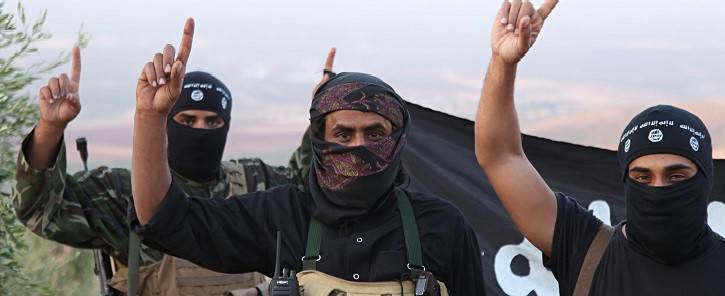
Islamic State poised to exploit mass releases of displaced persons from the al Hawl camp in Syria
The Syrian Democratic Forces (SDF), the US partner force in Syria, plans to release up to 25,000 Syrian women and children from the al Hawl internally displaced persons camp.
The al Hawl camp absorbed an overwhelming wave of internally displaced persons and combatants after the SDF seized the last ISIS physical stronghold in Baghuz in March 2019.
The camp’s horrendous conditions presented a humanitarian and security challenge for the SDF, the United States, and the international community. The mass release of these displaced persons risks providing new opportunities to ISIS by dispersing a vulnerable population into areas where ISIS is active.
ISIS will capitalize on the mass release of Syrians to increase recruitment efforts and intimidation campaigns against these returnees, who may also face retributive violence within their own communities.
The SDF is not adequately resourced to monitor or protect returnees unless the United States and the international community increase their support.
The Syrian Democratic Forces’ political wing announced its intent to “release all Syrians” from the al Hawl camp at a symposium for the northeast Syrian governance entity in Raqqa City on October 4.
The new announcement could lead to the release of up to 25,000 Syrians. The political wing’s co-chair, Ilham Ahmed, later clarified the policy via Twitter, stating that “Syrians who have serious accusations will remain in the camp,” but she did not define “serious accusations.”
The timeline and process for returns remain unclear. The SDF remains committed to returning the remaining 30,000 Iraqi residents of the camp to Iraq.
Iraqi officials continue to stall efforts to negotiate a plan with the SDF to return residents safely, as local communities have rejected them as possible ISIS supporters. The SDF continues to encourage non-Iraqi foreign governments to repatriate their citizens held in al-Hawl’s foreign annex, to little avail.
Poor security and humanitarian conditions in al Hawl have deteriorated since the establishment of the camp, and some of its thousands of women and children residents still adhere to ISIS’s ideology.
As of September 2019, al Hawl housed roughly 28,000 Syrians and 31,000 Iraqis as well as 10,000 foreigners housed in a separate annex in order to prevent their radicalization of other residents.
The total population was more than twice what the camp was built to sustain. The AANES struggles to provide these residents basic services, including health and education. Deradicalization programs for former ISIS supporters are similarly sparse.
Although the SDF has repeatedly requested additional aid to address the challenges of administering al Hawl, the international community has failed to sufficiently mitigate the camp’s humanitarian and security crises.
The SDF began limited releases of Syrians under local agreements with Arab tribes, primarily in Deir ez Zour and Raqqa, in June 2019. The tribes assumed responsibility for reintegrating these returnees and preventing their return to ISIS, with unclear results.
Arab tribes upon whose support the SDF depends have become increasingly vocal in demanding the release of Syrians at al Hawl, where the SDF’s inability to provide security has worsened perceptions of its legitimacy as a security guarantor. Turkey and pro-Assad actors, including Russia, have used al Hawl as a wedge issue to undermine the SDF by amplifying stories alleging that the SDF abuses al Hawl residents, particularly women.
US policy has called for the return of foreign al Hawl residents to their homes, although many countries have resisted. The SDF started moving hundreds of foreign al Hawl residents to the better secured and less crowded al Roj camp nearby in August 2020. At least 17,000 ISIS combatants, 100 of whom are foreign, remain detained in northeast Syria’s makeshift detention facilities.
ISIS and al Qaeda alike have used the plight of residents of al Hawl as a rallying cry and fundraising pitch. The late ISIS caliph, Abu Bakr al Baghdadi, urged ISIS members to free women in displacement camps in his last public speech in September 2019.
ISIS social media accounts echo this demand, claiming that all Muslims are obliged to release their “sisters” in displacement camps. The extent of ISIS’s penetration into the camp is unclear, but demonstrations of loyalty from numerous women and expressions of solidarity from children indicate that ISIS may have infiltrated the camp.
ISIS fundraising efforts have used video reports showing women and children at al Hawl calling for the return of the caliphate. Women in the camp’s foreign annex have actively attempted to enforce ISIS’s extreme religious laws on other residents within the annex, sometimes through violence.
Women may pragmatically perform or fake pro-ISIS activity to solicit donations for their living expenses or to get smuggled out. Some examples of violent activity with unclear motives have occurred in the main section housing Syrians and Iraqis.
For example, an unknown resident killed an Iraqi refugee on October 3 and several residents burned the tents of other residents in May 2020. ISIS operatives and smugglers have also enabled a low-level but steady stream of escapes.
Source: ISW Research





